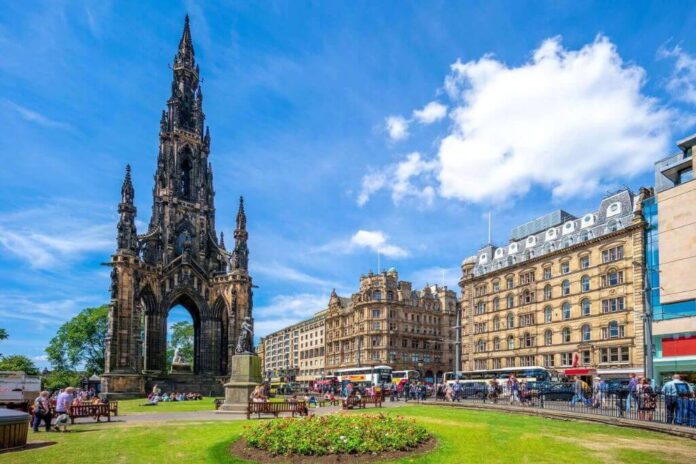The eye-catching memorial to Sir Walter Scott, one of Scotland’s most well-known authors, is located on the edge of bustling Princes Street. The largest memorial to a writer in the world is the Scott Monument. This demonstrates how well-liked and adored Scott was.
The monument has made an outstanding imprint in Edinburgh’s history as a result of its immense size. The Scott Monument, created in recognition of one of the most well-known Scottish men, is examined in further detail in this article, along with a few fascinating facts about it.
1. It is situated in a common park.
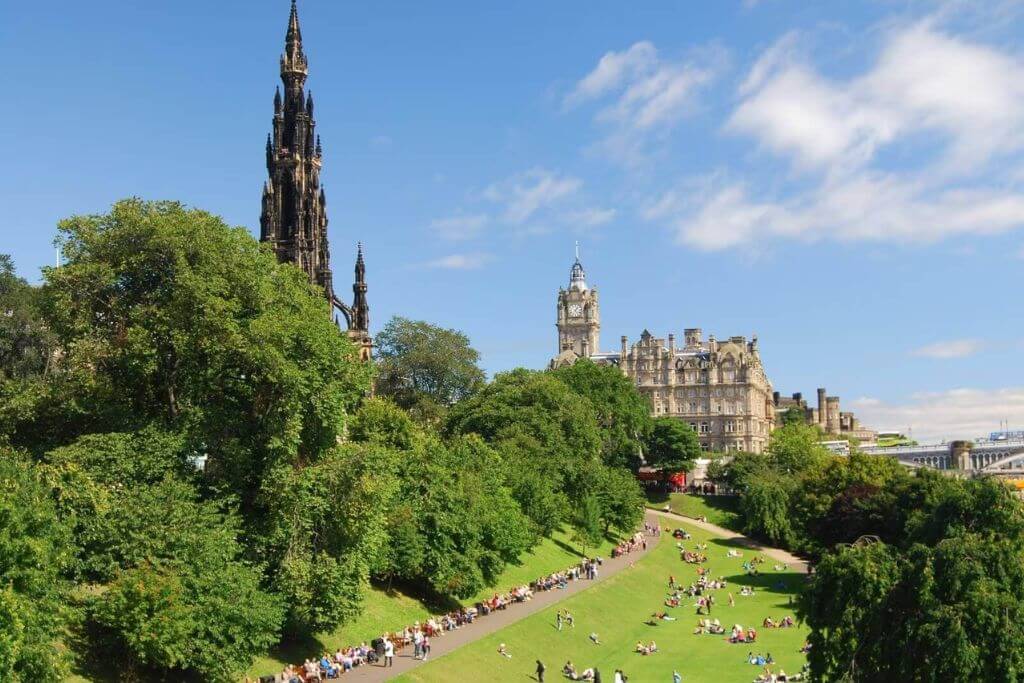
In the Princes Street Gardens, two adjacent public parks in the centre of Edinburgh where you’ll find the Scott monument. The stunning monument is situated in front of the well-known Jenners Department Store, which opened on Princes Street in 1838.
The Edinburgh Waverley Railway Station was given its name after one of Scott’s novels in addition to being in a fantastic location.
2. Its observation deck provides breathtaking city views.
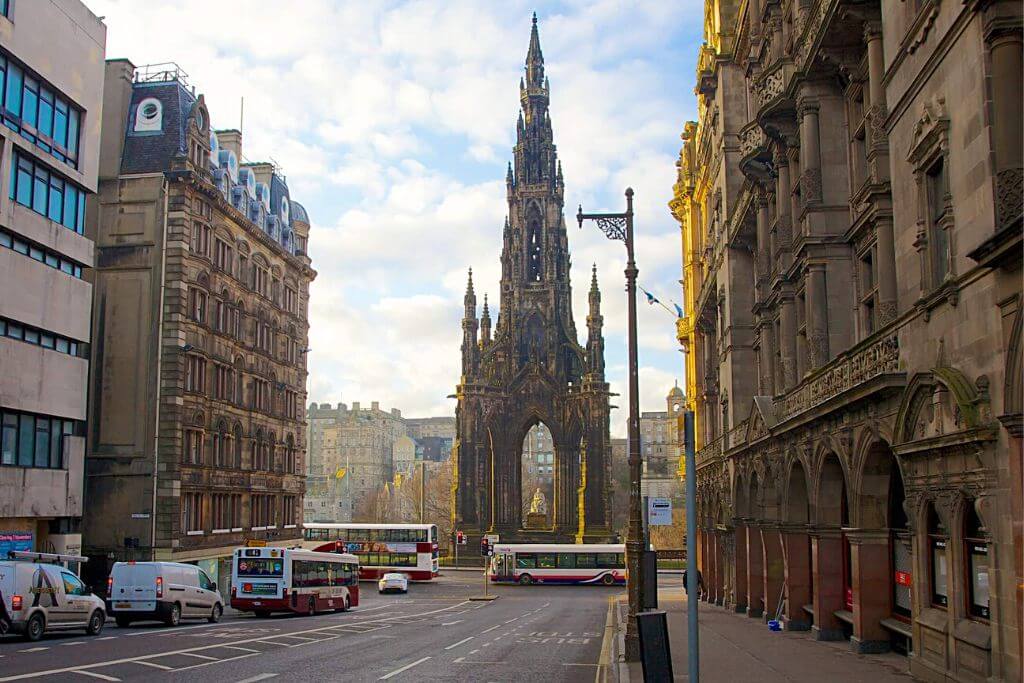
Visitors can climb the spiral staircases on the magnificent monument to reach the top.
To get to the observation deck on the top floor, you have to climb up to 287 steps. You may enjoy some of the most breathtaking views of Edinburgh and its surroundings in this area.
3. It is Gothic in style.
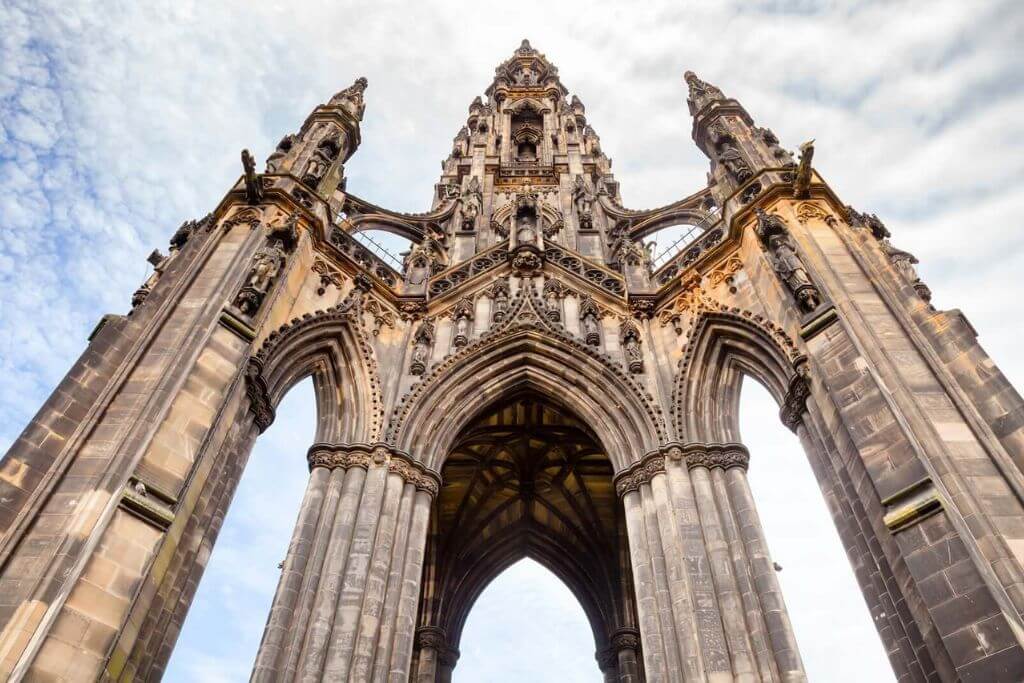
It is occasionally referred to as the “Gothic Rocket” due to its unusual appearance. Victorian Gothic (Gothic Revival) architecture was used to design the monument.
Planning for a monument was started soon after Scott passed away in 1832 by selecting an architect through an architectural competition. The judges selected one design that bore the name “John Morrow” as the author.
The participant was named self-taught architect George Meikle Kemp. He was worried that his application would be rejected due to his lack of credentials, but in 1838 he was given the job of erecting the memorial.
4. The architect never got to see it finished.
George Meikle Kemp, who designed the Scott Monument, never saw it finished. George drowned in the Union Canal while walking home from the construction site on a cloudy night six months before the building was completed.
Additionally, this terrible event prevented him from being present for the actual dedication, which took place on August 15, 1846, precisely six years after construction began.
5. Its goal is to remember Sir. Robert Scott
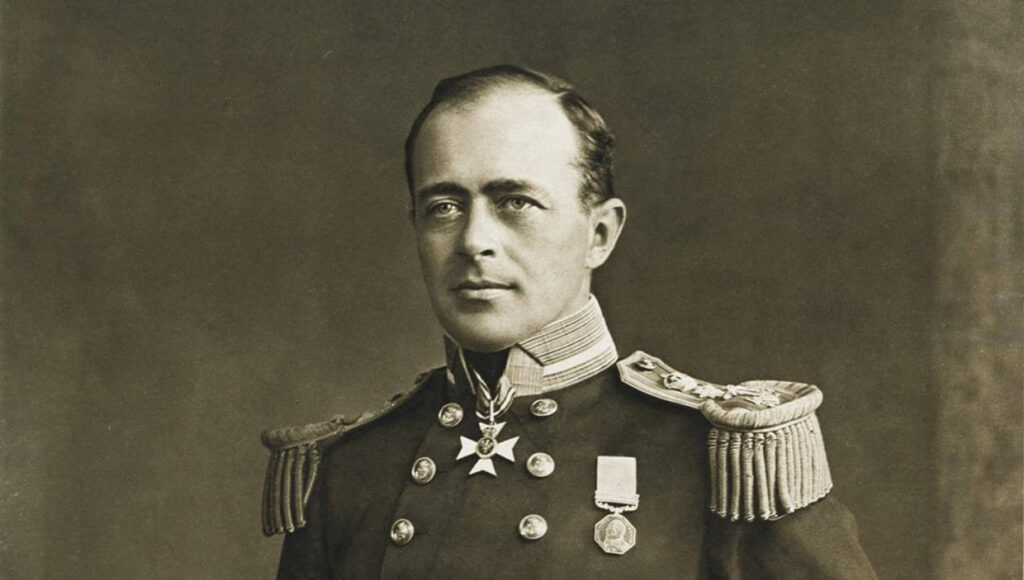
The Scott Monument is a significant landmark that was built in Sir Walter Scott’s (1771–1832) honour. He was a well-known historian and author from Scotland. His works include numerous timeless gems like:
He wrote engrossing stories with an appropriate historical backdrop thanks to his great historical knowledge. He was a successful author in addition to being an advocate, judge, and legal administrator, mostly serving as Clerk of Session.
6. The monument’s stones won’t ever be cleaned.
The majority of structures constructed before and during the Industrial Revolution have succumbed to pollution. The Binny sandstones that were used to construct the Scott Monument underwent this.
If the monument could be cleaned and restored to its former grandeur was a topic of discussion in the early 1990s. Unfortunately, it couldn’t be done since it would harm the building.
The Binny sandstone quarry was reopened for this purpose, and only the damaged stones were changed out. The entire cost of the renovations was £2.36 million.
7. One of its tallest comparable monuments
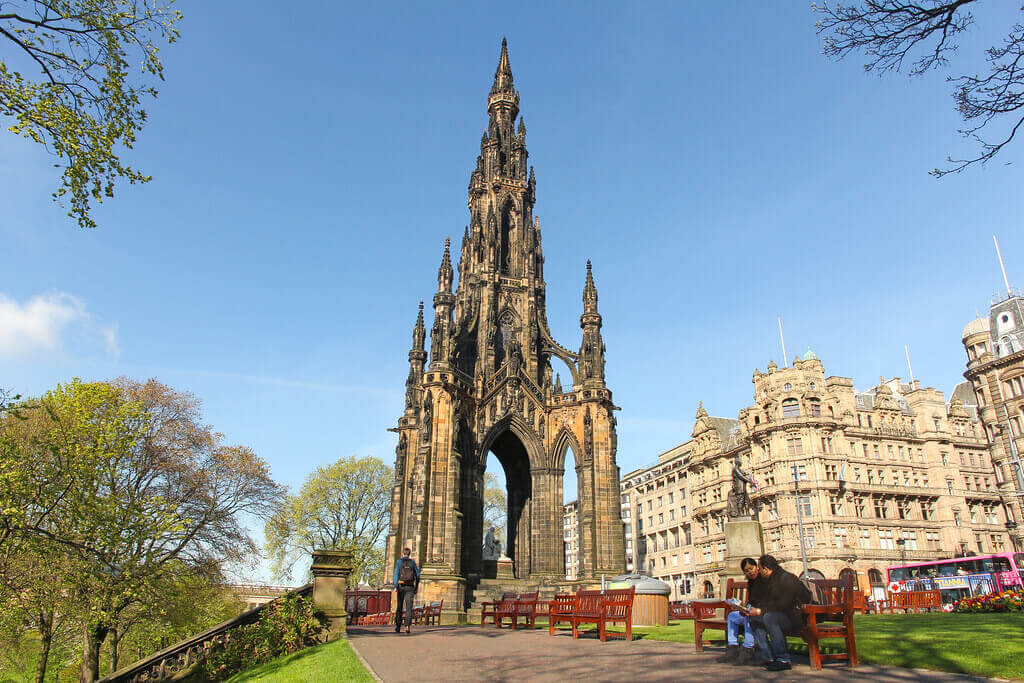
Only one monument in the entire globe honouring writers is taller than the Scott monument. Exactly 200 feet 6 inches (61.11 meters) is the height of the monument. There is no doubt that the structure has a much finer design.
8. Building the iconic structure took more than 4 years.
On August 15, 1840, work on this huge edifice began. In addition, it can take as long as 6 years to finish. The monument ended up constructed costing a whopping £16,154, which is equal to precisely £2,098,930.97 in today’s money.
9. Sixty-eight statues adorn it.
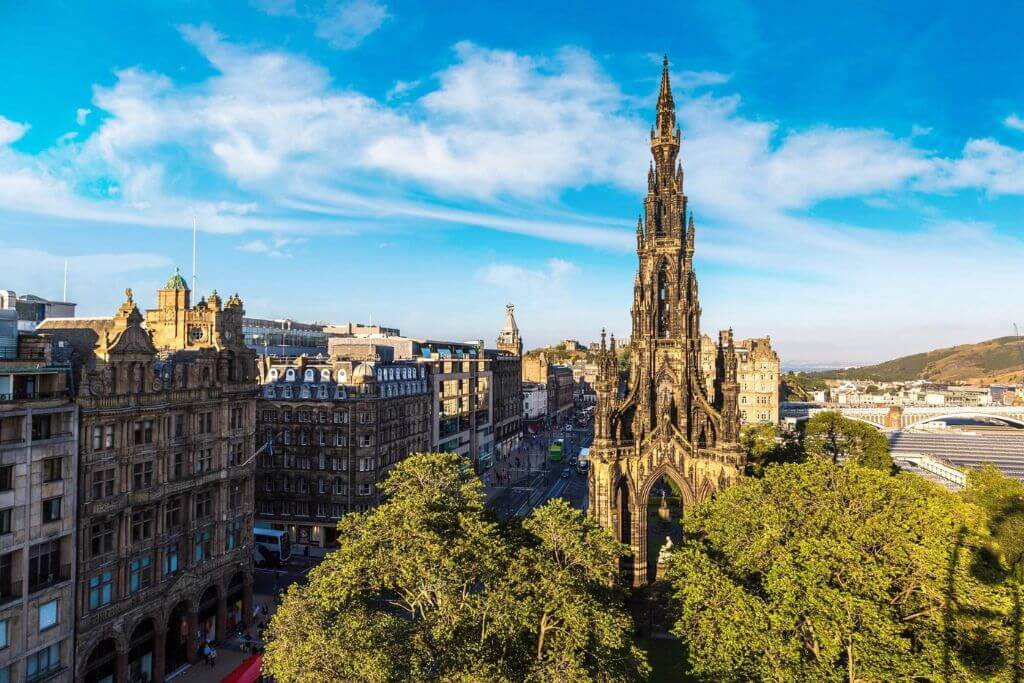
There are more statues adorning the monument in addition to the one of Sir Walter Scott. On the monument itself, there are 68 statues in total.
These monuments were all made at the time by many of the top sculptors, and all feature characters from Scott’s most well-known books.
Additionally, 16 Scottish poets and writers are shown in relief in the lower parts. The four statues on top of the monument may only be viewed from the observation deck above, while 64 statues are viewable from the ground.
10. A statue of Sir Walter Scott and his dog can be found on the monument.
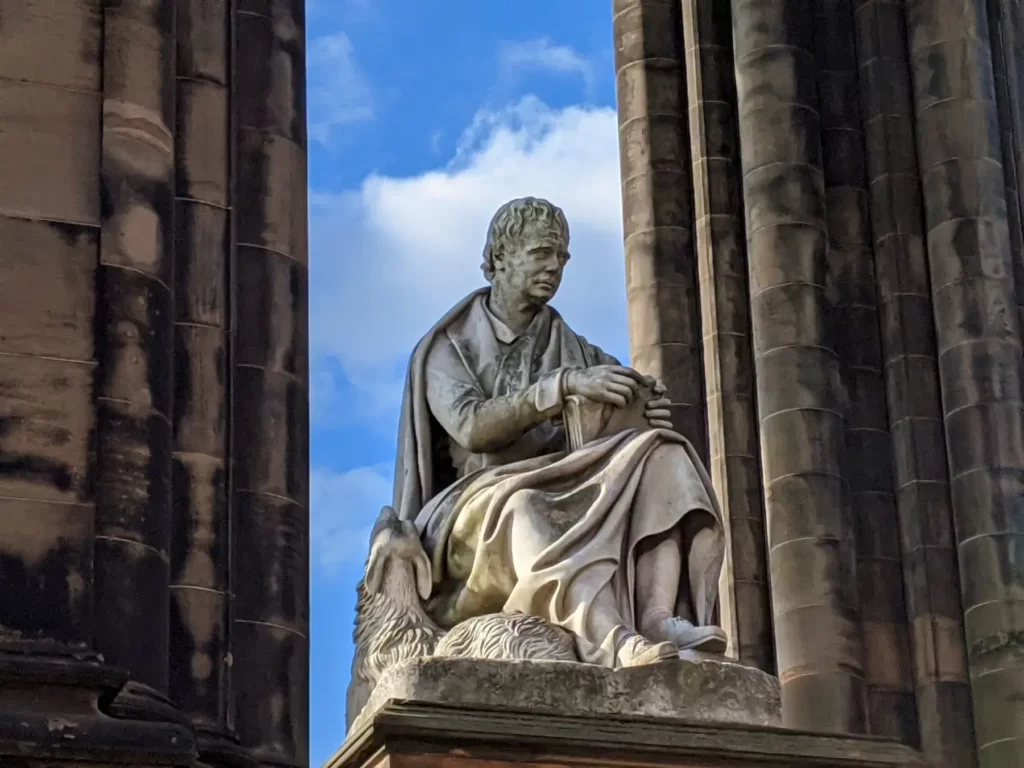
A statue of Sir Walter Scott and his dog Maida can be found on the pedestal in the exact middle of the monument. The author is shown sitting on Maida while he writes one of his novels.
Sir John Robert Steell, one of the most well-known Scottish sculptors in history, was responsible for creating this statue. He was reputed to have sculpted numerous famous figures from Scottish history. It was made from a single 30-ton block of white Carrara marble between the years 1840 and 1846.
The stunning Scott memorial perfectly captures the influence Sir Walter Scott’s writings and social contributions have. A real treasure in the heart of Edinburgh, adding history as well as beauty to the community.
